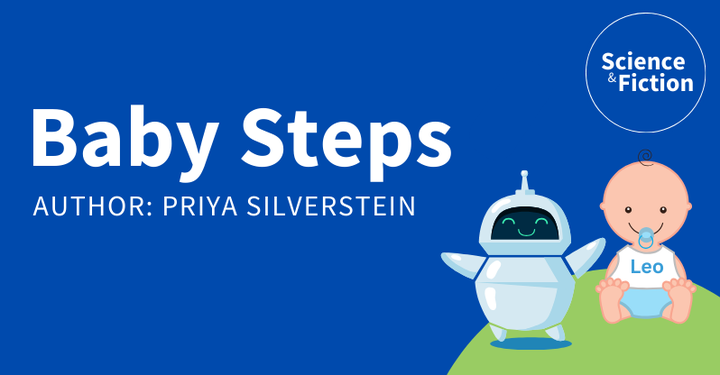
A story about babies and robots understanding intentions through gaze.
Content warnings
None
The short story
Less than a year after giving birth to his child Leo, Lucas decided to make his family of two into a family of three by getting a new kitten. “Leo, look, that’s our new kitty!” Lucas gushed, looking over at the new arrival.
As Lucas watched Leo speed-crawl over to the kitten and start pulling its tail, he wondered whether Leo understood that he wanted him to look at it. Did he understand the word kitty, that it corresponds to the fluffy blob currently rolling its eyes and accepting its fate at the hands of a curious baby? Did Leo understand that when Daddy looked at something – particularly if he said Leo’s name and looked directly at him first – that Leo should mentally follow some imaginary beams from Dad’s eyes until they hit some interesting object (the aforementioned fluffy blob)?
Lucas wanted to believe that the answer was yes. With no other adults in the house, it could get pretty boring! Lucas hoped that when he read to Leo – or when he called his name, or when he thought they were sharing a moment – he understood in at least some way what was going on. At the very least he hoped that he understood that he was being communicated to. But what if this wasn’t true?
The kitten let out a loud meow and broke Lucas out of his pensiveness. Leo crawled over, swapping one warm body for another and crawling into Lucas’ lap. Lucas smiled and whispered “I wonder what’s going on in that little brain” as he stroked Leo’s head. Leo’s response was a blank stare, confirming Lucas’ fears.
Determined to be the Best Dad Ever™, Lucas had been obsessively reading about developmental psychology ever since finding out he was pregnant. However, he often found himself going down rabbit holes about topics that weren’t particularly practically relevant for actually raising an infant. Lucas recalled coming across a research paper – while down one of these rabbit holes – about how babies learned to follow gaze.
Lucas vaguely recalled the two theories the paper had presented. One proposed that babies were born with an innate understanding of each other’s intentions. In other words, when Lucas looked at Leo and then looked at the kitten, was Leo thinking “Daddy wants me to look at the kitty”? The other theory suggested that babies learn through being rewarded by repeated interactions. Had Leo just learned over time that he would be “rewarded” with interesting things if and when he did look in the same direction as Dad, without any real understanding of what was going on?
Lucas noticed that Leo was nodding off, tired out from all the excitement of the new kitten. He carefully placed him in his crib, and pulled up the paper on his laptop to have another look. The paper described how other scientists had taught a robot to follow someone’s gaze without the robot needing to have any understanding at all of what was going on! The authors then went on to test whether babies learned in the same way as the robot and found evidence that they did! Lucas paused, for a moment saddened at the thought that Leo had no idea that Daddy was communicating to him. But then his feelings changed, and he picked up his phone and texted his best friend “I just learned that Leo is a genius baby robot, I will not be taking any further questions at this time.”
The paper
Silverstein, P., Feng, J., Westermann, G., Parise, E., & Twomey, K. (2021). Infants learn to follow gaze in stages: Evidence confirming a robotic prediction. Open Mind 25(5),174-188. https://doi.org/10.1162/opmi_a_00049
Connection between story and paper
This publication explores how babies learn to follow someone’s gaze. There are two main theories: one suggests babies understand adults’ intentions from birth, while the other proposes they learn through repeated interactions. Previous research taught a robot to follow gaze, finding it learned in stages (horizontally and then vertically), which challenges the first theory. This study used eye-tracking to test babies’ gaze-following abilities at six, twelve, and eighteen months. Results showed six-month-olds didn’t follow gaze, while twelve- and eighteen-month-olds only did so horizontally, supporting the idea that babies learn to follow gaze through reinforcement learning, rather than innate understanding.